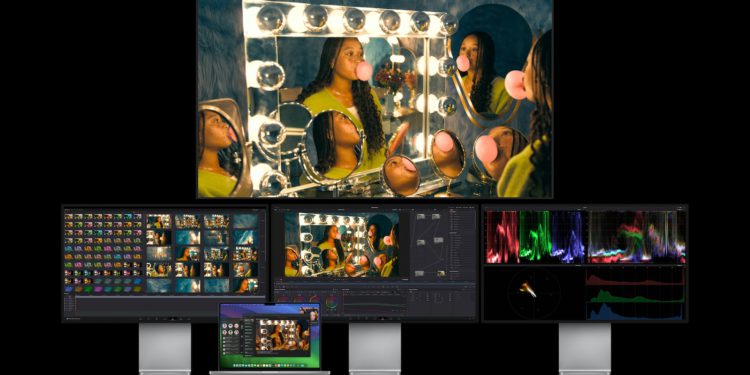Following the exciting unveiling of the M3 chip at Apple's "Scary Fast" event, the tech world is eager to get a closer look at the performance capabilities of this new processor. The first benchmark results are now in and promise impressive improvements over its predecessor, the M2 chip.
Apple has made a name for itself in the industry in recent years when it comes to developing powerful and efficient processors. The M2 chip set the standard, and now, with the M3 chip, Apple promises to raise the bar even higher. The benchmark results, recently published in the Geekbench 6 database surfaced are a first indication of what awaits us.
M3 chip: A performance increase of up to 20%
The preliminary results of the benchmarks are promising, with the M3 chip achieving single-core and multi-core performance scores of around 3,000 and 11,700 points respectively. In comparison, the M2 chip scores around 2,600 points in single-core and 9,700 points in multi-core. This means that the M3 chip offers an impressive performance increase of up to 20% over its predecessor, as announced at the Apple event. While it remains unclear whether these results refer to the new 14-inch MacBook Pro or the iMac, as both are available with the standard M3 chip, performance should be similar across both machines. The benchmarks are labeled "Mac15.3," which likely corresponds to a laptop with the same screen resolution as the 14-inch MacBook Pro.
The M3 chip in detail
The standard M3 chip not only impresses with its speed but also offers remarkable hardware. It is equipped with an 8-core CPU and an impressive up to 10-core GPU. This enables smooth performance, be it for compute-intensive tasks or demanding graphics applications. With support for up to 24 GB of RAM, the M3 chip offers sufficient resources for seamless multitasking experiences. The GPU of the M3 chip has an improved architecture that enables hardware-accelerated ray tracing and mesh shading. This opens up new possibilities for high-end gaming and makes games even more realistic. In addition, the M3 chip impresses with a Neural Engine that has 16 cores for artificial intelligence (AI), which accelerates the processing of machine learning and AI tasks.
A revolution in the Mac world
The first benchmark results for the M3 chip show a promising performance increase over its predecessor. With its powerful CPU, impressive GPU and support for AI tasks, the M3 chip will undoubtedly play an important role in the next generation of Apple devices. We can be excited to see how this processor will perform in the more powerful M3 Pro and M3 Max chipsets used in the new MacBook Pro models. Apple remains true to its reputation as an innovation leader and is setting new standards in the technology industry. (Image: Apple)
- The Future of the Mac: M3, M3 Pro and M3 Max
- iMac with M3: The future of all-in-one computing is here
- The MacBook Pro with M3: A Revolution in Performance
- The Evolution of the iMac: What has changed in the M3 iMac?





